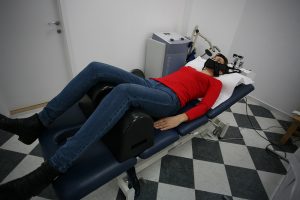VINKO TRANFIĆ: During and after a successful rehabilitation of the elbow it is necessary to pay attention to the neighbouring joints and muscles, and not only to the ones which are the most directly linked to the place of the injury. The body is a synchronized kinetic chain that responds to different loads as a whole. Imbalance or a lack of strength of one segment can result in an injury of an “incredibly” distant joint or muscle. High level of general physical fitness, balanced strength and muscle elasticity make a good basis for further normal life. So do not be surprised if after the elbow therapy you are immediately suggested to undergo a therapy of the cervical or thoracic spine or shoulders. For athletes, the situation is, of course, much more sharply defined. In the earliest stages of childhood the motor patterns are created, that is, the schemes of our movements and posture. For an athlete it is important that learning is gradual and as thorough as possible. It is known that in the state of extreme exhaustion incorrectly learned movements emerge. Under normal circumstances the athlete may appear technically perfect. In fact, correct movements that were learned later dominate then. Wrong technique gives a bad impression and it leads to a higher possibility of an injury and unwanted results. If an injury already exists (and professional athletes often perform still injured), there are predispositions for failure. The athlete may seem as if he is out of his mind and he/she makes beginner’s mistakes. Both physiotherapists and coaches must wok on the best possible physical fitness, especially paying attention to weak spots of a particular sport. For example, it is very hard to play handball because the range of possible injuries is tremendously wide. Well mastered running and swimming techniques and basic gymnastics should be essential before training any sport. This is how children learn about efficiency (lower energy consumption), lightness and precision of movement or posture. It is not excluded that a handball player in the semi-final or final of a tournament has an injury of, for example, the left knee or right elbow and the ankle joint. In such situations the player gives his maximum, but the question is to what extent the handicap can be overcome. If stress prevails over the positive shock, the reserves are quickly exhausted. In that case physical and psychological reactions are very unpredictable.


